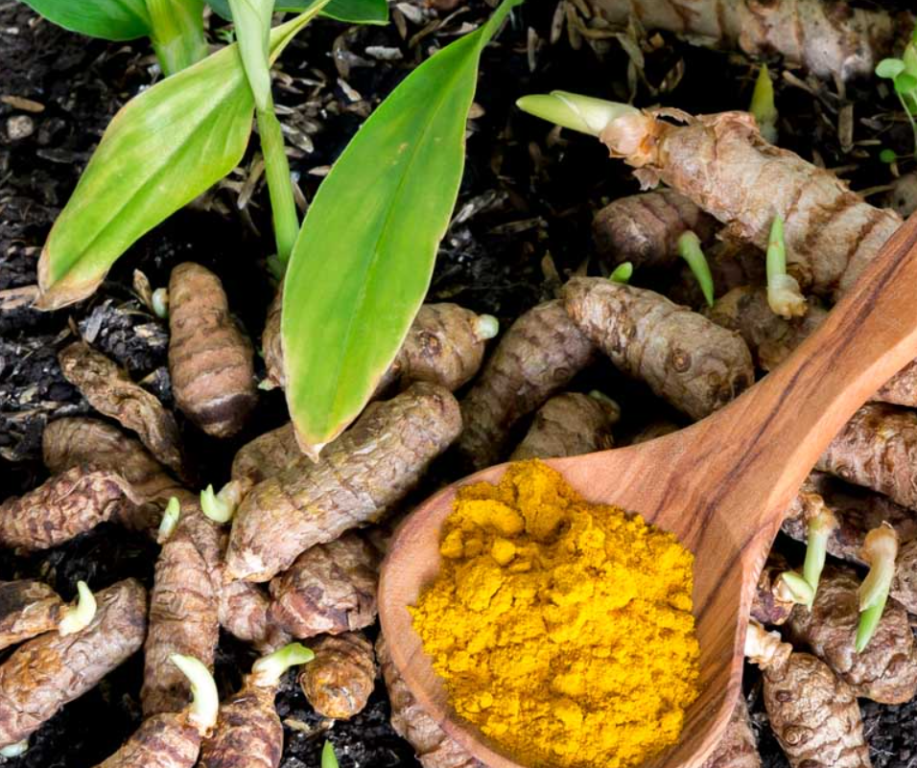
Turmeric, also known as Indian saffron because of its yellow color, is one of the earliest known spices to mankind and has a long history of medicinal as well as culinary use in Southeast Asia. This spice is now grown all over the country with Andhra Pradesh, Assam, Karnataka, Tamil Nadu, and West Bengal being the top producers. Turmeric has a warm bitter taste and a mustard aroma. Scientific name is Curcuma longa and is obtained from the underground tubers or rhizomes. It originated in India, and is widely cultivated throughout tropical Asia in present era, and to a smaller extent in other subtropical and tropical parts of the world. The spice grows comfortably in areas with temperatures between 20-35 degrees Celsius and warm humid climates. It can grow anywhere from mean sea level to 1500 m above sea level. If irrigated systematically then it can grow at greater heights as well.
As we are mainly restricted to our home boundary these days therefore the idea of growing turmeric indoors will be quite productive – be it use for your own consumption or earning extra income.
Growing turmeric is easy as long as you can consistently monitor and water your rhizome. Also, most of the growing process can take place indoors and doesn’t require sunlight. For growing turmeric, buy some turmeric rhizomes, plant them in smaller pots or planters, and then transfer them outside after 6-10 months before harvesting them. The easiest way to find them is to search for fresh turmeric rhizome in organic food stores. Searching online will be another alternative. Turmeric grows from the rhizomes just like ginger. The best season to plant turmeric is spring or summer when the temperature starts to stay above 12 C, preferred temperature is 25-30 degrees.
Steps for indoor turmeric cultivation:
Select a large pot because this spice herb can easily exceed the height of 1 m. The pot should be at least 12 inches deep and 12-18 inches wide so that the plant can spread its tubers freely. In one pot planting 1 or 2 rhizomes is advisable.
Cut the large rhizome into small pieces, and ensure that each one should have at least two or three buds. Fill a pot with rich organic soil that is moist and well-drained. The rhizomes should be then placed about 2 inches (5 cm) below the soil surface, with the buds facing up. Keep watering the pot thoroughly.

In context to fertilizer requirements, using an all-purpose liquid fertilizer is advisable every month, during the growing season. The application of manure or compost is also helpful. Pruning is not recommended by experts and it will be sufficient only to remove dried leaves time to time. Managing disease control is also easy since the turmeric plant is not prone to any serious disease or pests. However, red spider mites and scales can be troublesome. In diseases, the plant only suffers from rhizome rot and leaf spot. Rot appears when the plant is grown in waterlogged soil. Therefore, it is important to grow turmeric in well-drained soil.
Speaking about soil preparation, the soil should be kept moist throughout the growing season and one should make sure to moisten the foliage in dry weather so as to increase the humidity level around the plant. If growing turmeric in a warmer region, keep watering the plant to maintain moist soil during winters as well. The position must be sheltered from the wind. One should grow turmeric in a well-drained soil otherwise, the plant growth will suffer.
Harvesting:
Harvesting is not at all difficult. The turmeric plant normally takes around 8 to 10 months to mature and harvesting is done once the leaves become yellow and stem begins to dry up. Simply dig up the plant entirely, including the roots and then cut the required amount. After this replant the remaining part again to get a new plant growing. The following steps are involved after the rhizome is cut – First boil the rhizomes first and then remove the skin from rhizomes carefully. Place the bare rhizomes in a tray and dry them by exposing to sunlight. When the rhizomes are dry, grind them to turn into turmeric powder and finally store the homemade fresh powder in airtight containers, ready for household use.
If planning for extra earnings then there is a good scope in marketing the home made turmeric. As a safety measure against ongoing pandemic the traditional knowledge about spices being a strong immunity builder, especially turmeric has prompted number of Indians preferring increased consumption of turmeric in recent months. Due to numerous associated health benefits, turmeric juices and immunity boosting drinks are increasingly sold in the domestic market. Product like turmeric milk is in demand these days. Homemade turmeric can be sold in local/nearby grocery stores or vegetable vendors having a good sale on a daily basis. Another alternative can be to tie with some Mall or Supermarkets, and sell the produce.
















